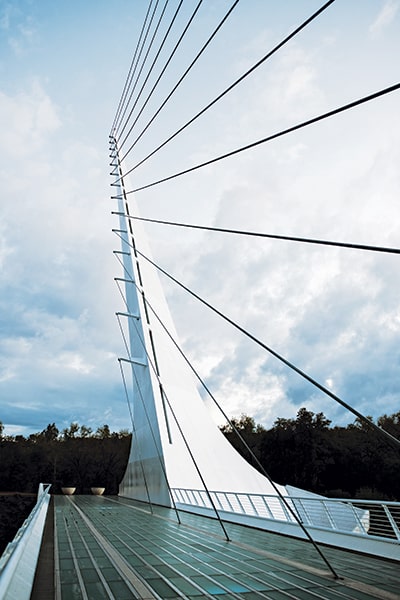Sun Struck
Learn Something New with Sundial Tours…
Her name is Sundial Bridge. Turtle Bay Exploration Park tour guides will tell you her height is 217 feet, her length 720 feet, width 23 feet. They can recite the number of cables and the weight they bear, while pausing a tour in the middle of the span to invite visitors to seek the sensation of movement beneath them and to marvel at it. They delight in giving every visitor’s question an answer, and if they occasionally can’t, they enjoy the knowledge gained from finding it afterward.
“Don’t know that one, I look it up,” says volunteer Kay Johnson. “I like to learn a lot of things. Sometimes I learn interesting tidbits from the visitors on the tour. So, I get to learn something new and let everyone else know about it.”
“It’s the education you get with the job,” agrees volunteer Zelda Evans. “There’s so much you want to share. My first post – ever – on Facebook was, ‘I’m in love with this bridge!’”
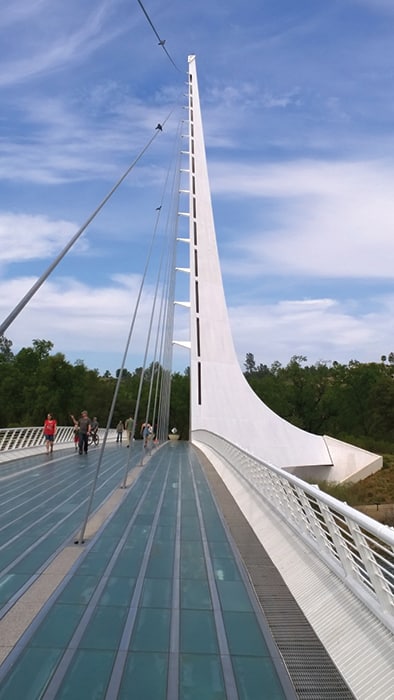
These two women, both retired, are veterans of the bridge tour who came together as a team for the first one and fleshed all the information out from there. Of course, a big question is, “Why do they call it the Sundial Bridge?” and it’s one for which they are always ready. “Kids these days don’t even know what a sundial is,” Evans says with a laugh.
An operable work of art, Sundial Bridge’s towering pylon, tilting 41 degrees and aimed directly at the North Pole, serves as her shadow-maker, necessary to determine the time of day from the sun. Far below, this shadow crosses a partial clock face, an ornate arc of white cracked tile mosaic and brass that marks the hours between 10 am and 2 pm. Because of the orbit of our planet, the Sundial Bridge casts a right-on accurate time only one day per year.
You might want to check your calendar. June 21, the first day of summer.
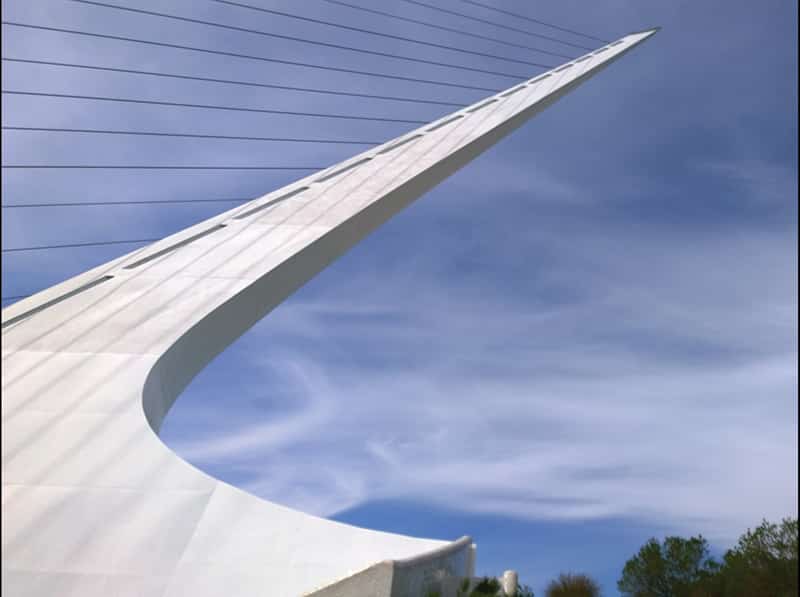
“The time’s not really that far off on the other days,” says Johnson, before guiding a class of third graders back toward a place where a cable connects to the deck. “Who wants to hear a bridge sing?” She invites the kids to gather around the cable and press an ear to the nearly two-inch-thick braid of galvanized steel wire strands, each shaped like a Z, which interlock to keep out dirt and moisture. Then she taps the cable with a Turtle Bay-issued plastic rod that won’t damage the wire.
The sound excites the youngsters. “It sounds like a laser!” cries one.
On her tour, Evans demonstrates another way the Sundial Bridge connects. “I can’t cross the bridge without hearing another language,” she says in a tone of wonder. “People come to see the bridge from all over the world.” As if on cue, an out-of-towner approaches her and asks if she would take a picture of the family. Evans accepts with a smile and snaps a photo of the group. Immediately, they insist she join them in a picture.
Johnson cites another international aspect. “I think it’s really great the bridge is made up of pieces from all over,” she says. “The cables come from London, the glass panels come from Quebec, cracked tile from Spain. The bridge’s creator is from Spain.” Then she will tell you about Santiago Calatrava, the renowned architect who envisioned, designed and oversaw construction of the Sundial Bridge, and the remarkable story about how it all came together.
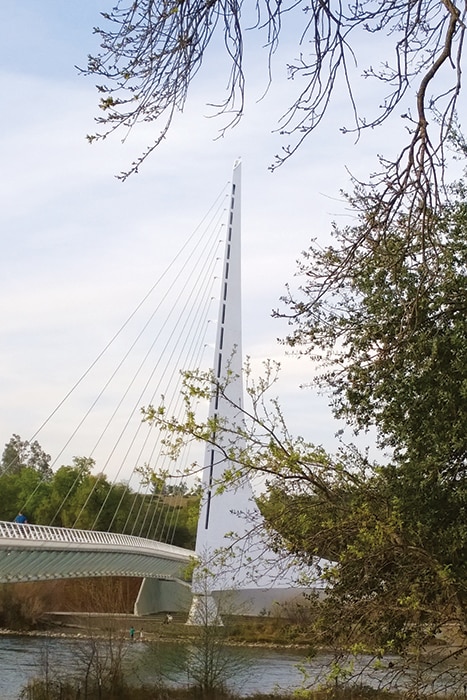
This tour guide, a retired scientist, can detail the physical stresses and countermeasures built in to make the Sundial Bridge stable and safe, such as the expansion joints on each end of the bridge to allow up to three inches of increased length in warmer weather and a 12-inch bearing that not only supports the weight of the massive pylon, but allows it to pivot, compelled by the forces of gravity and inertia.
Evans, the guide who fell in love with the bridge at first sight, offers a more lyrical perspective. “Look at it, the grandeur of it. How could you not stop and look at it?” she says. “The simplicity, the power of it. It’s one of a kind. It’s amazing to have something like that in Redding.”
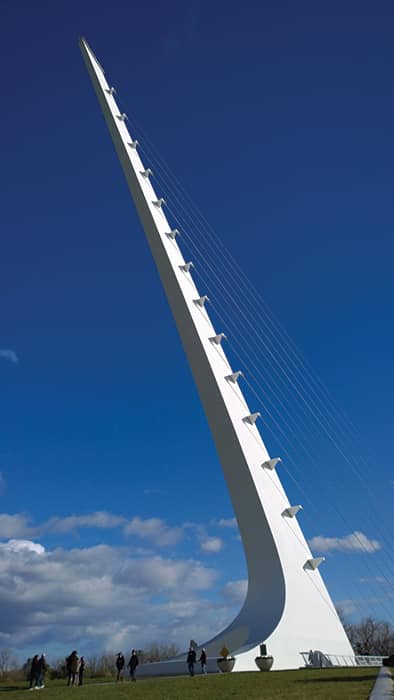
She stresses the environmental concerns addressed in the design. “The glass is frosted, so it doesn’t cast a shadow on the river. Otherwise, all that movement might disturb the salmon in their spawning
grounds,” Evans says, pointing to the aqua-green panels that fit into the deck. “Look closer, under the glass, and you can see mud nests. Sometimes you can see babies in the nests.”
Johnson and Evans, as well as other volunteers, can tell you so much more. Regular tours are scheduled at 10 am the first Friday and Saturday of the month. Special tours can be arranged by appointment. Sometimes, if they see someone who looks particularly interested, a guide may introduce themselves and offer to do what they love most to do, share what they know about the Sundial Bridge. •
Sundial Bridge, connecting the north and south campuses of Turtle Bay Exploration Park
844 Sundial Bridge Drive, Redding
(530) 243-8850
www.turtlebay.org
